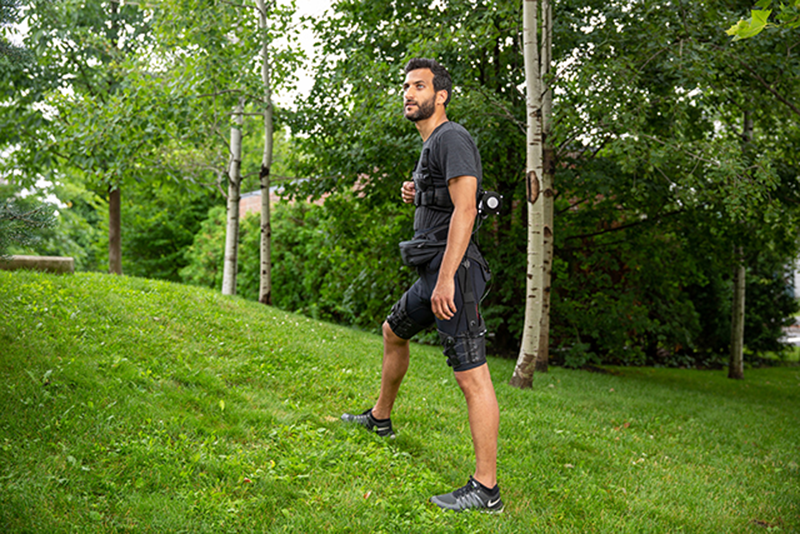
When walking or running, our gaits cover a wide range of speeds. For example, we may take a leisurely walk in the park, but when we face danger we run for our lives.
In the past, researchers have developed exosuits that help with rehabilitation and assist workers in doing heavy labor. Assisting walking and running with a single device is challenging because of the fundamentally different biomechanics of the two gaits.
Read more Scientists Develop Groundbreaking Multi-Joint, Personalized Wearable Soft Exosuit
Now, researchers from Harvard and University of Nebraska Omaha have developed an exosuit that makes walking and running easier, allowing for natural and highly efficient movement at different speeds.
The exosuit, developed by scientists at the Harvard John A. Paulson School of Engineering and Applied Sciences (SEAS), Wyss Institute for Biologically Inspired Engineering, and the University of Nebraska Omaha, helps with gait-specific hip extension during both walking and running. Their lightweight exosuit is made of textile components worn at the waist and thighs, and a mobile actuation system attached to the lower back which is controlled by an algorithm that can robustly detect the transition from walking to running and vice versa, reports Benjamin Boettner in Harvard John A. Paulson School of Engineering and Applied Sciences.
The exosuit weighs only 5 lbs and is powered by on-board batteries. It is meant to be worn around the waist and thighs, with the controller hanging on the back. It is controlled by an algorithm that can robustly detect the transition from walking to running and vice versa.

In a treadmill-based study, the researchers showed that the device reduced metabolic rates of walking by 9.3 percent and of running by 4 percent compared to when the participants were walking and running without the device.
“We were excited to see that the device also performed well during uphill walking, at different running speeds and during overground testing outside, which showed the versatility of the system,” said Conor Walsh, who led the study. Walsh is the Gordon McKay Professor of Engineering and Applied Sciences at SEAS, a Core Faculty member of the Wyss Institute, and Founder of the Harvard Biodesign Lab. “While the metabolic reductions we found are modest, our study demonstrates that it is possible to have a portable wearable robot assist more than just a single activity, helping to pave the way for these systems to become ubiquitous in our lives,” said Walsh.
Read more Ekso Bionics Unveils Next Generation Neurorehabilitation Suit EksoNR
The hip exosuit was developed as part of the Defense Advanced Research Projects Agency (DARPA)’s former Warrior Web program and is the culmination of years of research and optimization of the soft exosuit technology by the team, according to the report.











